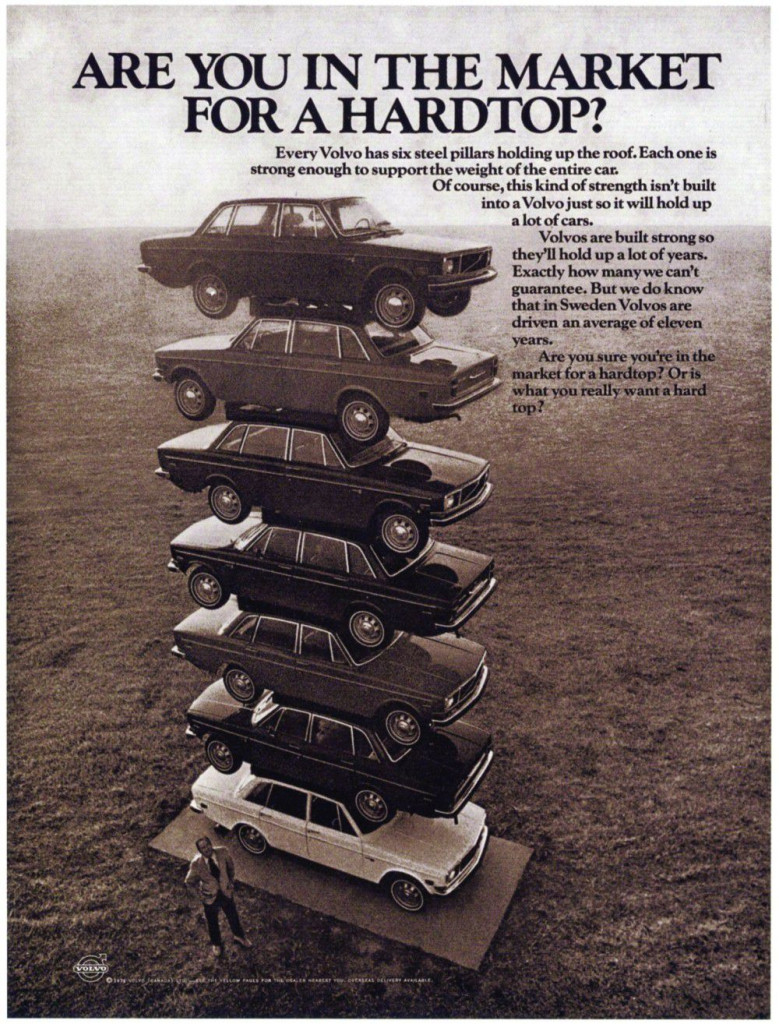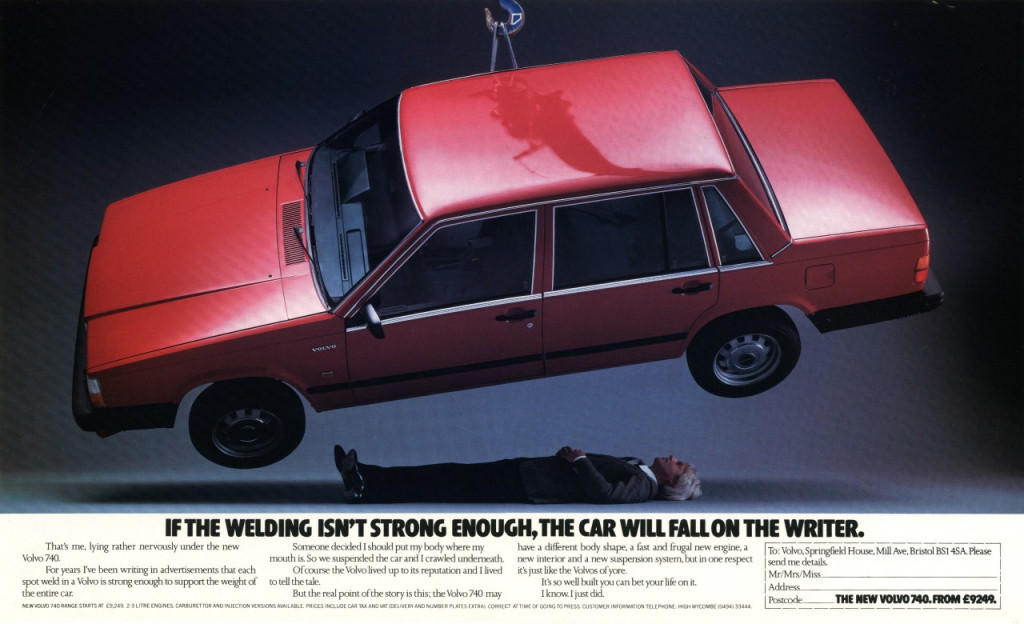And How You Can Demonstrate More than You Think —Even on Radio

So there I was, washing dishes with my trusty scotch brite sponge and Seventh Generation eco friendly dish soap, when I came across a greasy fry pan.
I grab my copper scrubbing brillo and… ditch the Seventh Generation and instinctively and inexorably reach for the blue Dawn.
Why did I just do that?
The Seventh Generation soap works just fine for greasy pans. I know because I’ve used it when we’ve been out of Dawn.
So why did I switch?
Because “Dawn takes grease out of your way.”
Now, if you didn’t watch TV during the late seventies and eighties, you’re probably scratching your head at that.
But if you did, you know exactly what I’m talking about.
The advertising geniuses at Proctor & Gamble ran a decades long campaign of demonstration ads on TV showing viewers how Dawn dispersed and dissolved grease.
The demos were incredibly powerful and the tagline crystalized that Brandable Chunk and then pounded it into your head with the power of repetition.
Such that three decades and change later, I’m still swayed by those ads.
Here are a few of those ads for your viewing pleasure:
In my humble opinion, few things are more powerful than a great demo ad.


Let me give you a few of my favorites demonstrating the power of demos:
And in more modern times, there’s Blendtec’s Will It Blend? Youtube campaign.
Those were all pure demonstration ads in the way that most people conceive of a demo ad. And all of them had a profound impact on sales.
Demo ads rock.
The Strongest Brand on the Planet and Its Passion for Demo Ads
Yet there’s one company, famous for its advertising, that you probably don’t associate with demo ads.
Apple.
Most people think advertising and apple and their minds go to the either the “1984” Super Bowl commercial or the Think Different campaign.
Both are legendary, but I think it’s worthwhile remembering their intended purpose and context.
Apple’s 1984 ad was a teaser announcement meant to get people interested in a live demo. So the ad used intrigue and drama while leaving the demonstration to the sales team.
Then there’s the Think Different campaign, which is especially instructive.
In May of 1997, upon his return to Apple, Steve Jobs was asked about launching a TV ad and essentially told his people that it was too soon to advertise.
In Job’s words there wasn’t any “sex” or demonstrability in the products yet.
There was nothing he could demo to people that would make them want to buy, like when he first rolled out desktop publishing.
And yet, about five months later, Apple launched “The Crazy Ones” to kick off the Think Different campaign in late September 1997.
In other words, when the board pushed Jobs to advertise before he had any “insanely great” products to demo, he fell back on that campaign.
Yet, as soon as Apple had demonstrably cool products, the pure branding ads took a backseat and the demo ads gained center stage, like so:
Thanks to Johnny Ive, the “sex” was back in Apple products and demo ads became the rule of the day for the next decade.
Here’s an iMovie ad from 2000 which is basically a very creative demo:
And here’s the very first iPod ad in 2001
And here’s an ad for Mac’s insanely great new laptops in 2002.
And probably one of the most famous iPod ads, which is still very much a demo of the product’s principal benefit:
Where did this passion come from?
From Jobs himself, who was masterful at the product demo, making the “One more thing” line famous in his presentations to the Mac faithful.
Just check him out demoing the first Macbook Air:
So from 1998 until 2006, it was basically all demos all the time for Apple.
Then they launched the “Get a Mac” campaign”
Now, some will see that as an interruption of Apple’s streak of demo ads.
But are they really?
Clearly they’re NOT demoing a product.
But, in a way, what they’re demonstrating is an experience. Specifically, the Mac experience in contrast to the PC experience.
The common annoyances that PC users had become resigned to “accept” were highlighted and demonstrated (or at least dramatized), and then contrasted with the frustration free experience of owning a Mac.
And this worked in the way that demos work because the PC frustrations were already resident in the minds of viewers.
Apple didn’t have to show people those frustrations; they just had to evoke them.
On the other side, it would be difficult to actually demonstrate the ways in which a Mac “just works.”
And yet the “Get a Mac” campaign could personify Mac as easy-going, enjoyable, and frustration free while talking about how easy to use Macs are.
The only other option for that would be a testimonial, which Apple briefly tried in 2002 with their “switch” campaign.
And it’s worth comparing the lack of impact of the testimonial-based “Switch” ads with the high impact of the demo-based “Get a Mac” ads, despite the message being almost identical.
And apart from Get A Mac, which is just a different kind of demo ad, Apple continued to run pretty much all demo ads all the time.
Demoing Experiences & Reactions
But let’s go back to the get a Mac campaign and the idea of demoing an experience rather than a product.
Here’s one of my favorite demo ads wherein they don’t actually demo the product:
Pretty clever, right?
Note, too, that this ad would work just as well as a radio ad.
That may seem paradoxical that a demonstration ad would work on the radio, until you understand what they were actually demonstrating.
The ads weren’t showing the product in action so much as showing the benefits impact on the buyer.
Because they were principally demonstrating ease and gratification more than anything else.
In fact, any direct response pitch man will tell you — including the late, great Billy Mays — demonstrability of product benefit was everything.
But just as importantly was the ability to dramatize the ease and instant gratification of the product.
The slap chop is shown chopping and mincing everything with exaggerated ease, with the pitch man going out of his way to operate it with one finger.
Why?
Because the stupid gadget doesn’t do anything that a nice sharp chef’s knife can’t do.
Except the slap chop requires no skill, less effort, and does it with greater speed for the average person.
Similarly, the infomercials show the Ginsu knife effortlessly gliding through food (even though its cutting performance is more akin to hacksaw than light saber).
And Oxyclean gets out stains like magic, no scrubbing required.
Demo Ads for Service Industries
Great. But how do you translate that to service industries?
Like with the CLR’s “Dirty Mouth” ad, you demo the emotional reaction at the magic moment of gratification.
For example, check out the “You Just Have to Point” campaign for 1-800-GOT-JUNK?
1-800-GOT-JUNK? Home Sweet Home Commercial
Notice first the emphasis on EASE and INSTANT GRATIFICATION: you just have to point and the junk disappears.
And the demonstration is as much a demonstration of the customer’s reaction as to the service itself.
This is why the ads work just as well as radio ads as demo ads.
You don’t need someone else to show you what your home would look like if your unwanted junk magically disappeared.
That image plays perfectly in your head.
You just need someone to tell you that such an experience is possible, and to spur your imagination around how good that experience would feel.
All of which is why this advertising campaign, created by The Wizard of Ads, played a huge roll in effectively doubling the sales revenue of the company.
Got What It Takes to Run a Demo Ad?
So why aren’t demo ads more popular?
Because as we saw with Apple, you can’t do a demo ad unless your product or service experience is worthy of a demonstration.
If there’s no sex in your products, or no gratification and ease in your service, then demo ads won’t work for you.
But if you’ve got what it takes, and if you choose the right thing or moment to demonstrate, then this style of ad can move mountains for you.
All you need are guts, operational excellence, and the right ad team in your corner.
- Getting a Foot in the Door — Of Perception - November 27, 2025
- What Digital Superstars Know About Offline Advertising - November 17, 2025
- Unmistakable: A Tale of Two Boots and Branding Done Right - November 8, 2025
